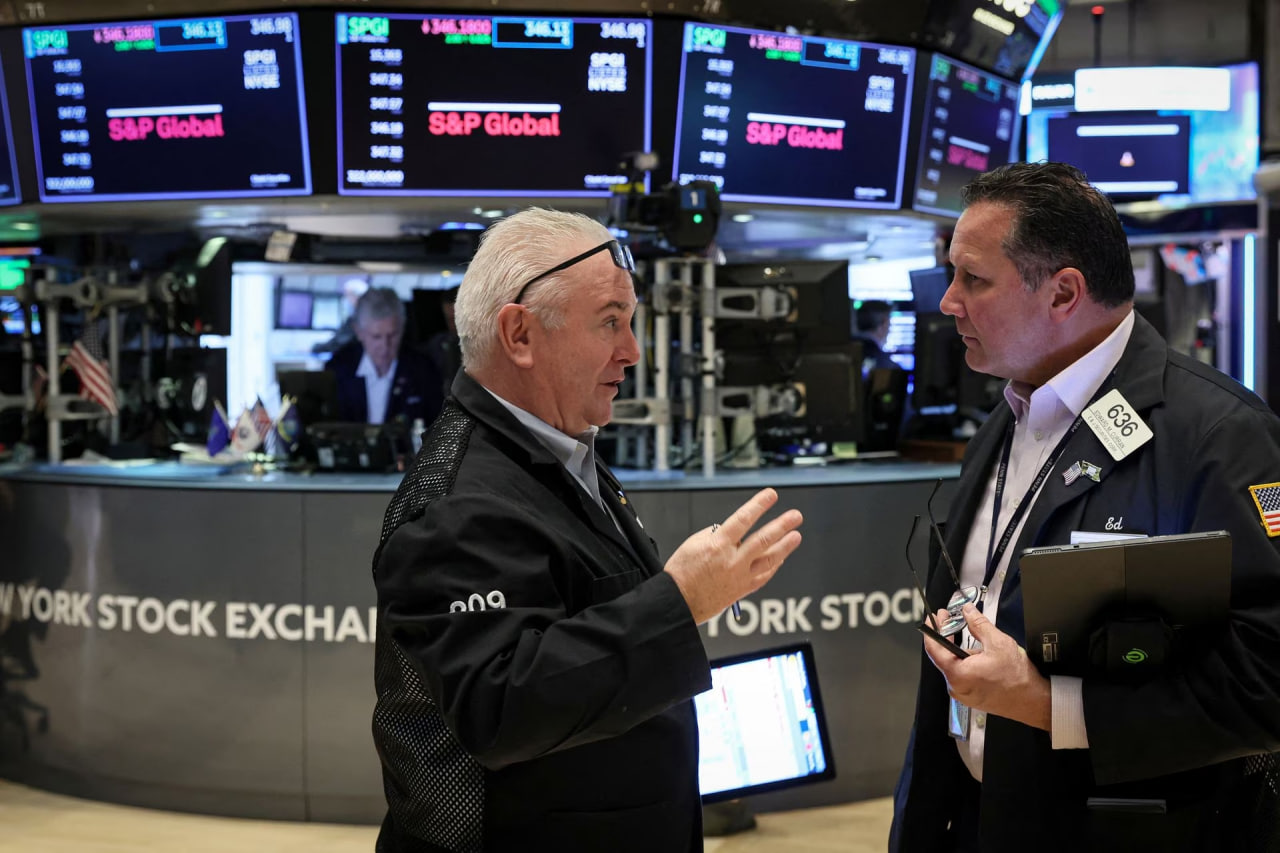Commodity Market Update: A Dive into the Daily Fluctuations and What It Means for You
Meta Description: Dive deep into the daily commodity market fluctuations with this comprehensive analysis of the latest price movements in key sectors like energy, metals, and agricultural products, uncovering insights and potential implications for consumers and investors.
Introduction:
The commodity market, a dynamic and complex ecosystem, is a constant source of intrigue and concern for investors, businesses, and consumers alike. Every day, the prices of various raw materials, from fuels to metals to agricultural products, rise and fall in response to a myriad of factors, including global supply and demand, geopolitical events, and even weather patterns. Understanding these fluctuations is crucial for anyone seeking to navigate the intricate web of global trade and economic activity. Today, we'll delve into the recent movements in the commodity market, exploring the key factors driving these changes and dissecting their potential implications.
Understanding the Daily Dance: Key Movers and Shakers
The commodity market, like a bustling marketplace, is constantly in motion. Today, we saw a mixed bag of performances, with several commodities experiencing significant dips, while others bucked the trend and saw gains. Let's break down the key movers and shakers:
Spotlighting the Decliners
- Shipping Sector Takes a Hit: The shipping industry, particularly the European market, experienced a significant downturn, with the 集运欧线 index plunging over 5%. This decline can be attributed to a confluence of factors, including weakening global trade, concerns over rising interest rates, and the ongoing uncertainty surrounding the global economic outlook.
- Chemical Sector Faces Pressure: The chemical industry also saw significant downward pressure, with 纯碱 prices dropping over 5%. This decline is likely linked to weakening demand from key industries like glass and detergents, as well as concerns over potential oversupply in the market.
- Lithium Market Softens: The 碳酸锂 market, a key component in the electric vehicle industry, saw a notable correction, with prices falling over 4%. This pullback could be attributed to a combination of factors, including increased production from new lithium mines, potential price competition from alternative battery technologies, and a recent slowdown in the global EV market.
- Metals Under Pressure: 沪铅 prices, a bellwether for the lead market, also experienced a significant decline, dropping over 4%. This dip is likely influenced by factors like weakening demand from the automotive sector, concerns over potential supply chain disruptions, and fluctuating global economic conditions.
Shining a Light on the Risers
- Pork Prices on the Up: Despite the overall downturn, the 生猪 market saw a positive bump, with prices rising. This increase can be attributed to a combination of factors, including strong domestic demand, rising feed costs, and a potential scarcity of pork supplies in the market.
- Sodium Hydroxide Gains Momentum: 烧碱, a key chemical used in various industries, also saw a rise in prices. This increase could be linked to strong demand from sectors like paper, textiles, and detergents, as well as potential supply constraints due to recent production disruptions.
Beyond the Daily Numbers: A Closer Look at the Big Picture
While the daily fluctuations in commodity prices can be captivating, it's crucial to look beyond the immediate headlines and consider the larger economic trends shaping the market. Here are some key factors to keep in mind:
- Global Economic Outlook: The global economy is currently navigating a complex landscape, with concerns over inflation, rising interest rates, and potential recessionary pressures looming. These factors are likely to continue influencing commodity prices, with a potential for further volatility in the coming months.
- Geopolitical Tensions: Ongoing geopolitical tensions, particularly in regions like Ukraine and the Middle East, are adding uncertainty to the commodity market. These tensions can disrupt supply chains, impact energy flows, and contribute to price fluctuations.
- Supply Chain Disruptions: Global supply chains have been grappling with disruptions ever since the pandemic, creating bottlenecks and impacting the availability of various commodities. These disruptions can lead to price increases and market instability.
- Climate Change and Sustainability: The growing awareness of climate change and its impact is influencing the commodity market. Investors are increasingly seeking sustainable and responsible investments, while regulatory pressures are pushing for a transition to cleaner energy sources.
Navigating the Commodity Market: Tips for Investors and Consumers
The commodity market can be a challenging and volatile landscape, but understanding the key factors driving price fluctuations can help investors and consumers make informed decisions. Here are some tips to navigate this complex environment:
- Stay Informed: Keeping abreast of the latest news and analysis on the commodity market is essential. Utilize reliable sources like financial news outlets, industry reports, and expert commentary to stay informed about trends and potential risks.
- Diversify Investments: Diversifying your investment portfolio across different commodity sectors can help mitigate risks and offer potential for greater returns.
- Consider Hedging Strategies: Hedging strategies can help protect against potential losses in volatile markets. Consult with a financial advisor to determine appropriate hedging strategies for your specific situation.
- Explore Alternative Investments: Consider investing in commodities through exchange-traded funds (ETFs) or other financial instruments to access the market without directly holding physical commodities.
- Be Mindful of Consumer Spending: As a consumer, be aware of the impact of commodity price fluctuations on your daily expenses. Look for ways to reduce consumption and explore cost-effective alternatives.
The Bottom Line: A Dynamic and Interconnected World
The commodity market is a dynamic and interconnected system, reflecting the intricate web of global trade, economics, and geopolitical events. Understanding this complex landscape is essential for making informed decisions, whether you're an investor seeking to capitalize on market opportunities or a consumer seeking to navigate the cost of living. By staying informed, diversifying investments, and embracing a long-term perspective, you can navigate this dynamic market and potentially find opportunities for growth and success.
常见问题解答:
- What are the main factors driving commodity price fluctuations?
- Global supply and demand
- Geopolitical events
- Economic conditions
- Weather patterns
-
Technological advancements
-
How can I stay informed about commodity market trends?
- Subscribe to financial news outlets like Bloomberg, Reuters, and Wall Street Journal.
- Follow industry reports from organizations like the World Bank, International Energy Agency, and the U.S. Department of Agriculture.
- Attend industry conferences and webinars.
-
Consult with financial advisors and commodity market experts.
-
Is it a good time to invest in commodities?
-
There is no one-size-fits-all answer. The decision to invest in commodities depends on your individual risk tolerance, financial goals, and market outlook. It's crucial to conduct thorough research and consult with a financial advisor before making any investment decisions.
-
How can I mitigate the impact of commodity price fluctuations on my household budget?
- Reduce consumption of energy, food, and other commodities.
- Explore alternative and cost-effective options for goods and services.
- Seek out price comparisons and discounts.
-
Consider purchasing in bulk when possible.
-
What is the future outlook for the commodity market?
-
The commodity market is subject to various factors, including global economic conditions, geopolitical events, and technological advancements. It's difficult to predict future market trends with certainty. However, analysts anticipate continued volatility in the coming months due to factors like inflation, rising interest rates, and potential supply chain disruptions.
-
How can I learn more about commodity trading?
- Enroll in online courses or workshops on commodity trading.
- Read books and articles on commodity trading strategies.
- Join online forums and communities dedicated to commodity trading.
- Consider seeking guidance from a certified commodity trading professional.
Conclusion:
The commodity market is an intricate and dynamic ecosystem, reflecting the complexities of global trade, economics, and geopolitics. Understanding the key factors driving this market is essential for investors, businesses, and consumers alike. By staying informed, diversifying investments, and embracing a long-term perspective, we can navigate the challenges and opportunities presented by the commodity market. As we move forward, it’s crucial to remember that the daily fluctuations are just one piece of a much larger puzzle. The commodity market is constantly evolving, and staying ahead of the curve requires a keen eye for both the short-term trends and the long-term forces shaping the global economy.



